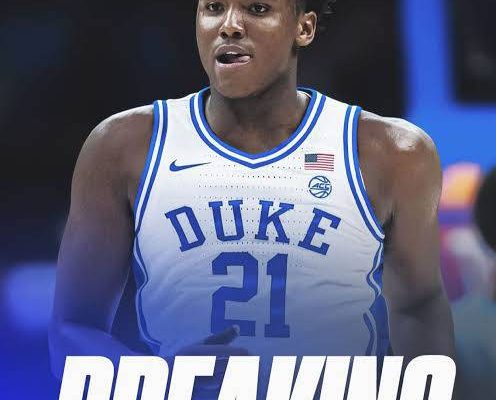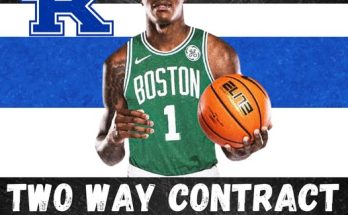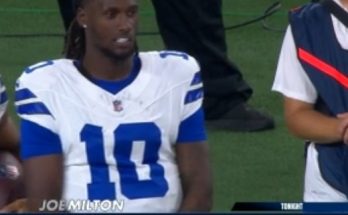Duke basketball has long been synonymous with elite recruiting, championship aspirations, and a relentless pursuit of excellence under legendary figures like Mike Krzyzewski and now Jon Scheyer. Each season, the Blue Devils command national attention not just for their storied program but also for their ability to attract some of the nation’s most highly touted talent. Among these prospects, five-star big man Patrick Ngongba has been one of the most anticipated players to join Duke’s frontcourt in recent years. His size, athleticism, and versatility promised to make an immediate impact for a team seeking to return to national prominence. However, a recent injury update from Coach Jon Scheyer has cast uncertainty over Duke’s frontcourt future, leaving fans and analysts alike questioning how the team will adapt if Ngongba’s availability is compromised.
Patrick Ngongba’s recruitment was nothing short of extraordinary. Ranked among the top prospects in the country, his combination of height, mobility, and skill set made him a coveted target for nearly every powerhouse program. Scouts lauded his ability to stretch the floor, protect the rim, and contribute to a fast-paced style of basketball that aligns perfectly with modern college basketball trends. His recruitment process was intensely followed by national media, with speculation on whether he would commit to Duke, Kentucky, North Carolina, or other traditional blue-blood programs dominating the recruiting landscape. When Ngongba ultimately chose Duke, it was celebrated as a major win for Jon Scheyer, who has been steadily building his own identity as a coach following the monumental legacy left by Krzyzewski.
Scheyer’s early statements about Ngongba highlighted the player’s readiness to contribute immediately. The coach emphasized not only the young man’s physical gifts but also his work ethic, basketball IQ, and ability to integrate seamlessly into Duke’s system. Ngongba was expected to anchor the paint, provide a reliable scoring option in the post, and offer defensive versatility, particularly in matchups against teams with dominant frontcourt players. For a program that frequently juggles multiple top-tier recruits and experienced upperclassmen, Ngongba’s addition was seen as critical to both depth and long-term success.
However, the excitement surrounding his arrival has been tempered by a concerning injury update. Coach Jon Scheyer’s recent remarks revealed that Ngongba is currently managing a significant health issue, the details of which have been cautiously disclosed to avoid jeopardizing the player’s privacy while maintaining transparency with fans and media. Although Scheyer did not specify a precise timeline for recovery, he emphasized that the coaching staff is fully committed to providing the necessary support and medical care to ensure Ngongba returns at full strength. This statement has sparked a wave of speculation, as the Blue Devils now face the challenge of adjusting their roster plans and on-court strategies in light of this uncertainty.
Duke’s frontcourt has historically been a cornerstone of its success. From towering centers to versatile forwards, the program has built a legacy on players who can dominate the paint while also contributing in transition and on the perimeter. Losing or delaying the availability of a five-star big man like Ngongba could have ripple effects throughout the team. Scheyer’s coaching philosophy emphasizes adaptability and depth, but even the most prepared teams can struggle when a highly anticipated talent is sidelined, especially when that player was expected to be a cornerstone of both offense and defense. The timing of this injury is particularly critical, as Duke enters a competitive season in which every game could influence NCAA tournament seeding and championship aspirations.
The implications extend beyond just Duke’s immediate performance. For recruiting, this injury serves as a reminder of the unpredictable nature of college athletics. Programs that heavily invest in high-profile recruits must balance long-term development with short-term needs, and unforeseen injuries can test even the most well-laid plans. For Ngongba, the path to recovery will be closely monitored not only by Duke’s medical staff but also by NBA scouts and national media, given his status as a potential future professional player. His ability to return to peak form will have significant consequences for both his personal career trajectory and the broader expectations surrounding Duke’s roster.
Analysts have begun exploring potential adjustments Scheyer might employ to mitigate the impact of Ngongba’s absence or limited availability. Duke’s frontcourt rotation, which would have relied heavily on Ngongba’s size and versatility, may now need to lean on other players to fill gaps in scoring, rebounding, and rim protection. Upperclassmen with experience in the Duke system may see expanded roles, while younger players will be challenged to step up sooner than expected. This scenario, while not ideal, also presents an opportunity for emerging talent to showcase their abilities on a national stage, potentially strengthening Duke’s depth in the long term.
Scheyer’s leadership will be crucial in navigating this uncertainty. Known for his calm demeanor and strategic mind, he has repeatedly demonstrated an ability to manage both the pressures of high-profile expectations and the complexities of roster management. Balancing the need to protect Ngongba’s health while maintaining competitive performance will require careful decision-making, from practice regimens to game-time rotations. The coaching staff’s approach to communication will also play a role, as players must remain motivated and confident even when a key teammate faces setbacks.
Fans, naturally, are feeling a mixture of concern and optimism. Duke supporters have grown accustomed to elite recruiting classes delivering immediate results, and the anticipation surrounding Ngongba’s debut only heightened expectations. Social media has seen a flurry of speculation, from timelines for his return to debates about which players can fill the void in his absence. Despite the uncertainty, the Blue Devils’ culture of resilience and adaptation provides a foundation for navigating this challenge. The program has a history of overcoming obstacles, whether through injuries, roster changes, or the pressures of national spotlight, and this situation will be another test of that enduring strength.
It is also worth noting the psychological impact on the team. High-level athletes often face pressure to perform not just for themselves but for their teammates, coaches, and fanbase. Knowing that a cornerstone player like Ngongba is dealing with an injury can influence confidence and team dynamics. Effective leadership from Scheyer and veteran players will be essential to maintain morale and cohesion, ensuring that the team remains focused on collective goals rather than being distracted by uncertainty.
From a broader perspective, this injury update underscores the delicate balance in college basketball between talent acquisition and player development. Programs like Duke invest heavily in recruiting, scouting, and training, yet even the most meticulous planning cannot fully account for the unpredictability of injuries. How the Blue Devils respond to this challenge may serve as a case study for other elite programs facing similar circumstances, highlighting the importance of depth, adaptability, and strategic foresight.
Patrick Ngongba’s journey remains one to watch closely. While the injury presents a temporary setback, the combination of his talent, work ethic, and support from Duke’s coaching and medical staff suggests that a strong recovery is possible. When he does return, expectations will be high, and his impact could be pivotal in determining Duke’s trajectory in both conference play and the NCAA tournament. For now, the program, fans, and media will have to exercise patience, trusting in the process that has historically defined Duke basketball’s approach to overcoming adversity.
In conclusion, the recent injury update on Patrick Ngongba from Coach Jon Scheyer has undeniably cast a shadow of uncertainty over Duke’s frontcourt future. The five-star big man’s anticipated contributions were expected to be central to the team’s success, and his temporary absence or limited availability requires adjustments across the roster and coaching strategy. Yet, amidst the concern, there remains a thread of optimism. Duke’s program is built on resilience, strategic adaptability, and a tradition of excellence that extends beyond any single player. Ngongba’s recovery, coupled with the leadership of Scheyer and the depth of the roster, will ultimately determine how the Blue Devils navigate this challenge. While the road ahead may be uncertain, one constant remains: Duke basketball has faced obstacles before and has consistently found ways to emerge stronger, making every season a testament to the program’s enduring legacy. The coming weeks and months will reveal not just the status of a five-star recruit but also the fortitude of a team and program determined to maintain its position among college basketball’s elite.



